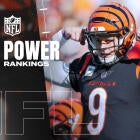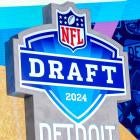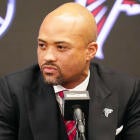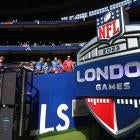
The Baltimore Ravens have a massive void at wide receiver after trading Marquise Brown to the Arizona Cardinals. Baltimore had a good first round of the draft, arguably creating the best secondary in football by drafting safety Kyle Hamilton at No. 14 overall and shoring up the offensive line by selecting center Tyler Linderbaum at No. 23.
Baltimore received the No. 23 overall pick (Linderbaum) and a third-round pick (No. 100 overall), giving the Ravens a whomping nine picks from the second to the fourth round of the draft. The Ravens have one second-round pick (No. 45), one third-round pick (No. 76), and six fourth-round picks (No. 110, No. 119, No. 128, No. 130, No. 139, No. 141).
In prime position to land a wide receiver (or two, potentially three) over the next two days, the Ravens can easily please Lamar Jackson with some pass-catching options with all this draft capital. Perhaps Baltimore even adds a veteran wideout along with a few of these draft picks.
What are Baltimore's options in the draft going forward? How does their current depth chart look at the moment? The Ravens will certainly be adding wide receivers over the next 48 hours.
Ravens receiver depth chart
| Position | First Team | Second Team |
|---|---|---|
LWR | ||
RWR | ||
Slot WR |
The Ravens drafted Bateman in the first round last season and really liked what he showed in year one. Since Bateman debuted in Week 6, he was tied for fifth amongst rookies in receptions (46), sixth in receiving yards (515) and fourth in receiving first downs (29). Is Bateman ready to be a No. 1 receiver? He certainly has the potential to be.
Duvernay is one of the best punt returners in the game, leading the league with 13.9 yards per return and having six punt returns of 20-plus yards -- which also led the NFL. He was a first-team All-Pro returner, but has just 53 catches for 473 yards and two touchdowns in two seasons.
The Ravens will need help at wide receiver after releasing Miles Boykin (third-round pick in 2019) this offseason as well. Sammy Watkins was also not re-signed after having just 27 catches for 394 yards and a touchdown in 2021.
Mark Andrews remains a vital part of the equation, as he finished with 107 catches for 1,361 yards and and nine touchdowns last season, leading all tight ends in receptions and receiving yards. He'll be the top pass-catching option in a Ravens offense that focuses on the power read, counter read, and counter bash run attacks.
The Ravens are also getting J.K. Dobbins and Gus Edwards back at running back, so they'll be focal points in an offense that will focus on Jackson's dual-threat ability at quarterback. Still, Jackson needs some reliable receivers on the outside.
What draft options are available?
| Player | School | CBS Sports Position Rank | Receptions (2021) | Yards (2021) | Receiving TD (2021) |
|---|---|---|---|---|---|
George Pickens | Georgia | 6 | 5 | 107 | 0 |
Christian Watson | North Dakota State | 8 | 43 | 800 | 7 |
Skyy Moore | Western Michigan | 9 | 95 | 1,292 | 10 |
Khalil Shakir | Boise State | 10 | 77 | 1,117 | 7 |
John Metchie III | Alabama | 11 | 96 | 1,142 | 8 |
David Bell | Purdue | 12 | 93 | 1,286 | 6 |
Calvin Austin III | Memphis | 13 | 74 | 1,149 | 8 |
Jalen Tolbert | South Alabama | 14 | 82 | 1,474 | 8 |
The Ravens need a speed receiver to compensate for the loss of Brown -- and take advantage of Jackson's strong arm. Tolbert is an ideal fit, as he averaged 17 yards per catch over his last three seasons, showcasing his acceleration down the field. He needs to improve his strength and play against better competition, but there's no doubting his ability to track the ball down and make a big play. Tolbert is viewed more as a long-term project.
If the Ravens want a productive wide receiver who runs excellent routes, the best options are Metchie and Bell -- both players Baltimore can land later in the draft. Metchie would be an excellent option in the slot with his route-running ability and his crafty way of getting yards after the catch. Bell is great in all facets of the game, even if he isn't the most explosive player. His pass-catching ability would fit well in an offense that focuses on the run like the Ravens.
Pickens has WR1 potential, as he would be a player Baltimore would have to move up from No. 45 to get (having nine picks in Rounds 2 through 4 helps). He's great at getting separation at the catch point and is a natural fit on the outside, which is what the Ravens need. Watson is more of an athlete than a receiver at this stage, yet his ability would work well in Baltimore's offense. The Ravens can afford to take a gamble on Watson and have him develop with Jackson.
Ideally, Baltimore should draft two receivers of this group. The Ravens should trade up for one of the top receivers on the board in Round 2 and put their draft skills to the test by taking a shot on one in the third or fourth found.
Baltimore could also move up and draft one receiver and use some draft capital to acquire a veteran receiver that's available. The Ravens are very unlikely to use all nine of their picks from Rounds 2 through 4 in this draft, so there's ammunition to significantly improve at wide receiver.
The goal is to keep Jackson -- the franchise quarterback -- happy. Baltimore can accomplish this over the next two days and remain as a Super Bowl contender in the process.






















